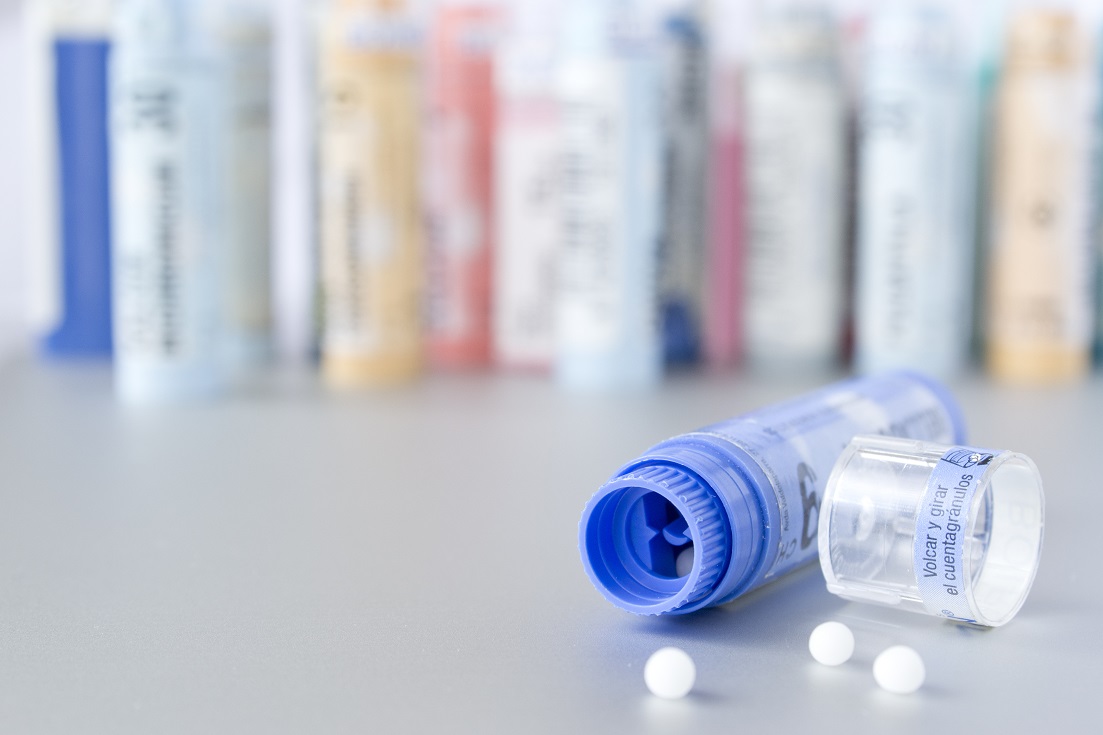
The FDA wrapped up a two-day hearing this week on whether or not Homeopathic remedies should be regulated like drugs. Listening to critics of Homeopathy try to justify why they don’t think the American public should have free access to Homeopathic remedies leaves one wondering just what the real motivation is behind these criticisms.The two dominant criticisms made against Homeopathic remedies are antithetical to each other. Critics complain that due to a lack of regulation Homeopathic remedies are dangerous, but then they turn around and say that homeopathic remedies are simply useless sugar pills with no therapeutic effect whatsoever, and no better than a placebo.
Both cannot be true.
Is this the new standard of scientific scrutiny that federal agencies are using to supposedly protect the public?
Are Homeopathic Remedies Dangerous?
The mainstream media is doing its best to comply with the pharmaceutical industry’s desire to paint homeopathic products in a bad light, and doing a very poor job of it. According to the mainstream media, which is obviously being fed statistics from the pharmaceutical industry and the federal government and doing no independent investigations of their own, what is the basis for claiming that Homeopathic remedies are “dangerous”?
Here is the official Associated Press [1] version:
A top federal drug regulator says that increased safety problems with Homeopathic remedies contributed to the government’s decision to revisit its oversight of the products at a public hearing this week.
In perhaps the most serious case, in 2009 the FDA ordered the maker of Zicam to stop marketing three products that contained zinc gluconate. The agency linked those products to 130 reports from consumers who said they lost their sense of smell.
That was the “most serious case” of “increased safety problems” with Homeopathic remedies which has prompted an FDA review. 130 people claimed they lost their sense of smell, a claim that the manufacturer says was actually never proven [2].
Contrast this to consumer reports of adverse effects from FDA approved drugs.
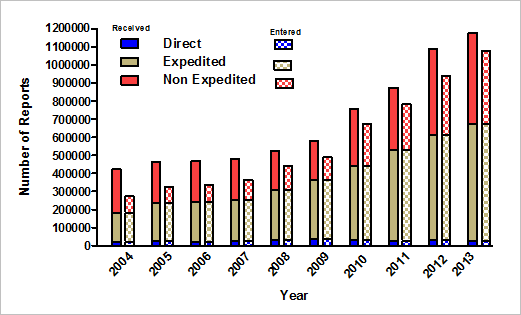
Over 1 million FDA-approved drug side effects are reported each year now, including serious side effects such as death (over 100,000 deaths a year). It is admitted that these voluntary reports do not encompass the totality of all prescription drug side effects.
Drugwatch.com, which is hosted by a Washington D.C. law firm, states:
Each year, about 4.5 million Americans visit their doctor’s office or the emergency room because of adverse prescription drug side effects. A startling 2 million other patients who are already hospitalized suffer the ill effects of prescription medications annually. (Source [5].)
Clearly safety of non-FDA-approved Homeopathic remedies is not the issue here, especially as compared to FDA-approved drug side effects.
FDA approved drugs are dangerous and deadly. Homeopathic remedies are not.
What is the Real Reason the FDA Wants to Eliminate Homeopathic Remedies?
The real reason why the FDA and the pharmaceutical industry want to regulate and eliminate Homeopathic remedies is no secret, and we do not even need to speculate about it. They come right out and tell us the reason:
Still, perhaps the greatest harm caused by Homeopathy is not necessarily caused by the products themselves—which, when properly prepared, rarely contain anything other than water and inactive ingredients such as sugars and binding agents—but by the fact that people often rely on Homeopathic products to the exclusion of proven scientific remedies. (Source [6].)
Admittedly, Homeopathic remedies are not dangerous. “Proven scientific remedies” of course means “FDA-approved” drugs.
Homeopathic remedies present a threat to the marketing of dangerous drugs (not people), as homeopathic product sales in the U.S. have increased 16% over the past 5 years to $6.4 billion annually, with projections to reach $7.5 billion by 2017. (Source [7].) If a Homeopathic remedy is marketed for a specific illness where a FDA-approved pharmaceutical drug already exists, the FDA wants you to choose the drug instead.
But if too many people start making the “wrong choice,” they want to take away your freedom to choose. This kind of action is well documented against other health products, particularly competing “unapproved” cancer remedies which historically are always outlawed to protect the huge cancer drug business. (See: Unapproved but Effective Cancer Cures [8].)
If the FDA does decide to regulate Homeopathic remedies, then only those remedies approved by them will be allowed to be sold, classifying them as drugs. There are only a handful of companies in the United States that the FDA allows to have drugs approved. Homeopathic remedies, and their booming popularity, would become part of Big Pharma.
Worldwide Homeopathy is Growing Rapidly Outside of the U.S.
Homeopathy was one of the most common medical practices in the United States in the 1800s. In 1892, homeopaths in the United Stated controlled about 110 hospitals, 145 dispensaries, 62 orphan asylums and old peoples homes, over 30 nursing homes and sanitaria and 16 insane asylums. However, the pharmaceutical industry did everything it could to stomp out homeopathy, and it is not as widespread in the U.S. today as it once was. (See: American Medical Revolutions: How the AMA Took Over America [9].)
Worldwide, Homeopathy is the second largest system of health care used behind conventional pharmaceutical-based medicine. Dana Ullman [10], one of America’s leading authorities on Homeopathy, writes:
According to recent surveys in France, an astounding 40% of the French public have used Homeopathic medicines, and 39% of French physicians have prescribed them. At least six French medical schools offer courses leading to a degree in Homeopathy, and Homeopathy is taught in all pharmacy schools and in four veterinary schools. In a prominent French news magazine President Francois Mitterand and six medical school deans called for more research on Homeopathy.
According to an article in the British Medical Journal, 42% of British physicians surveyed refer patients to Homeopathic physicians. Another survey of British physicians discovered that 80% of recent graduates wanted training in either homeopathy, acupuncture, or hypnosis.
Homeopathic medicine is very popular in Germany as well. One respected author estimated that 20% of German physicians use Homeopathic medicines occasionally. At present, the most popular hay fever remedy in Germany is a Homeopathic medicine, and other Homeopathic medicines for the common cold, sore throats, and circulatory problems are in the top ten of their respective categories.
To further aid the growth of Homeopathy, the late President of Germany, Karl Karstens, and his wife, Dr. Veronica Carstens, who is a medical doctor and a Homeopathic physician, recently started a homeopathic research foundation. Numerous new research efforts in Germany and throughout Europe have begun in the past couple of years.
Despite Homeopathy’s impressive popularity in Europe, it is even more popular in India. Presently, there are over 100,000 Homeopathic doctors and over 100 four- and five-year Homeopathic medical colleges in this country. Homeopathy has achieved such respect that in 1987 the government established Homeopathic drug detox clinics in six different police stations in New Delhi. A recent conference in India which described impressive results in the Homeopathic treatment of drug addiction received accolades from India’s Minister of Health and Family Welfare, the Finance Minister, and the Chief Justice. In addition to the Indian government’s support of Homeopathic drug detox clinics, they have also supported various research projects and Homeopathic hospitals and clinics. (Source [10].)
The FDA is clearly not concerned about Homeopathic remedies because they are a danger to the public. They are a danger to their monopoly on drugs, due to their growing popularity, and so they clearly want to either eliminate the competition, or get in on the action and take over the market.
by Brian Shilhavy

We all suffer from coughs and colds at one time or another. Sometimes the symptoms are mild and sometimes they knock us off of our feet for several days.
Homeopathy can help to shorten the duration and severity of your cold symptoms, as well as improve how you feel during the process.
Below is a list of 20 commonly used remedies for coughs and colds. To choose a remedy, remember that the sick person does not need to have all of the symptoms listed for a particular remedy, but most of the symptoms the person has (including all of the prominent symptoms) should be listed.
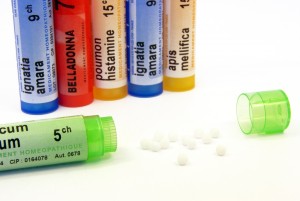
- Aconite: sudden onset, often after exposure to cold weather or dry, cold wind; the very beginning of illness, within the first 24 hours; fearfulness, high fever, restlessness, sensitivity to light, thirst; watery runny nose, sneezing, headache; early stages of croup.
- Allium cepa: clear, burning nasal discharge that burns the skin and upper lip; eyes red and burning with profuse bland tearing; tickling in larynx, painful dry cough; thirst.
- Arsenicum: profuse watery nasal discharge that burns the skin, nose feels stopped up; irritation and tickling in the nose, frequent and violent sneezing; nasal discharge may be thick and yellow; dull throbbing frontal headache; cough from tickle in larynx or from deep in chest, may be loose or dry; burning chest pain; chilly, anxious, restless, and fearful.
- Belladonna: sudden onset; high fever, dry flushed hot face, enlarged pupils, “strawberry tongue”; mentally dull but unusually sensitive to light, odors, noise, etc.; anxious; throat raw and sore; headache and/or earache with throbbing pain; painful barking and short cough, producing a little thin mucus.
- Bryonia: when cold has moved into chest; dry, painful, spasmodic cough, worse with deep breathing, eating, drinking, in warm rooms and during the day; better from the open air or a swallow of warm water; pain worse with any movement, so person may hold painful area to prevent movement, lie on painful side, put pressure on painful area, lie perfectly still with shallow, painting respirations; thirsty, irritable, watnts to be left alone; looks sick, tired and heavy; dusky, dark skin color.
- Chamomilla: often used for earache; very irritable and sensitive, child wants to be carried; severe pain; one cheek red and hot, the other cool and pale; thirsty.
- Eupatorium perforliatum: deep ache of back and limbs, bursting headache, eyeballs sore; afraid to move because of pain; very thirsty, then chills and fever; vomiting may follow thirst; great weakness.
- Euphrasia: bland watery discharge from the nose and copious burning tears (opposite of Allium cepa); nasal discharge worse in the morning, in open air, and lying down; loose shallow cough, worse during the day; may cough up large amounts of mucus formed in the upper airways.
- Ferrum phosphoricum: beginning stages of all inflammatory problems; gradual onset; pale with red cheeks; red burning eyes; hoarse, restless sleepless, weak, tired, thirsty, apathetic; better from cold applications.
- Gelsemium: gradual onset; sensation of heaviness throughout the body, drooping eyelids; great fatigue, but feels restless; chills up and down spine, worse slightest draft; headache; sneezing and dry sensation in the nose despite irritating watery nasal drainage; better with continued motion and open air if not chilled; worse from damp weather, anticipation (even of pleasurable events).
- Hepar sulphur: rarely used in the beginning stages; cold may have started with watery, runny nose, but now nasal discharge is thick, yellow and may be bad smelling; sneezing at the slightest exposure to cold; wants to be wrapped up, especially the neck and head, with the ears covered; rattling throat cough possibly with croupy sound, may cough up thick yellow phlegm; cough worse from cold air, cold food, exposure to wind, deep breathing and uncovering; sensation of splinter in throat; earache may begin with sensation of poking pain from throat to ear on swallowing; chilly, hoarse; irritable, sweating with sour odor, extremely sensitive to drafts; worse from slightest touch.
- Kali bichromicum: used during later stages of cold; discharge thick, yellow or greenish, and stringy, difficult to remove from nose; thick post-nasal drip; sinus headache with pressure at root of nose; head or face pain that can be pointed to with one finger; hoarse voice; better from heat and lying down.
- Kali muriaticum: to clear Eustachian tube following earache; snapping noises in the ear, impaired hearing following earache; worse from motion, rich foods, and fats.
- Mercurius: cold begins with creeping chilliness; violent sneezing; thick green or profuse watery nasal discharge, making nose and upper lip sore; raw sore throat, difficult swallowing; coated tongue, heavy salivation, bad mouth odor; ticking ear pain, worse at night; very thirsty, weak and trembling; whole person smells sick; worse at night, lying on right side, with wet and damp weather, sweating, a warm room, or a warm bed.
- Natrum muriaticum: cold begins with much sneezing; nasal discharge like raw egg white or boiled starch, with copious flow, or nose may be stopped up; loss of smell and taste; lips try and cracked, skin split at corners of mouth, may have cold sores around mouth; blue mood, weepy, worse, from or irritated by sympathy or comfort; worse from heat, lying down, noise; better from open air, cold bath, going without regular meals.
- Nux vomica: illness after exposure to cold or cold dry weather; onset not sudden; dry, tickling and scraping sensations in nose; nose stuffy and dry at first, then develops a watery and often irritating discharge with sneezing; nose may alternate between stuffed up and runny; “stuffiness predominates at night and outdoors, runniness in warm rooms and during the day” (Cummings and Ullman); throat raw and rough, tickle in larynx; teasing dry cough leads to soreness in chest; cough worse in morning (especially on waking), from 12AM to sawn, after eating, or mental work and in cold air; cough may end in retching; warm drinks relieve; chilly and unable to get warm despite piles of covers, every little motion causes chills; irritable and easily offended, extremely sensitive to noises and odors; better with warmth, in the evening, lying down, and an uninterrupted nap.
- Phosphorus: laryngitis and hoarseness, violent tickling in throat while speaking, worse in the morning or evening; cough dry or loose, croupy or deep, increases when talking, eating, laughing, or breathing cold air; cough worse lying down, especially on left side; cough aggravated by liquids, especially cold drinks; phlegm of any color or consistency, may be streaked with blood; chest pain, worse from motion, better from pressure; sensation of tightness or constriction, or of a weight in the chest; chilly and craves ice cold drinks; nervous when alone or in the dark.
- Pulsatilla: for a “ripe” cold; thick, creamy, bland yellow to yellow-green nasal discharge, with stuffiness alternating with fluent discharge; nose may run in the open air and the evening, and stuff up in a warm room; lips are chapped and peeling; dry mouth with a lack of thirst; both dry and loose coughs, may be dry in the evening, loose in the morning; sensation of weight on chest; coughing spasms may end in gagging or vomiting; cough worse when lying down, with exertion, a warm room,; better with open air; red, swollen external ear with an earache, with severe throbbing pain, worse at night; feels as if the ears are stopped up; weepy, wants sympathy and attention, feeling its useless to do anything to feel better; craves open air.
- Rumex crispus: for cough provoked by breathing cold air or by minute changes in air temperature from warm to cooler; extremely sensitive to inhaling cold air; variation in air flow may excite cough, so person carefully regulates breathing; cough dry and shallow, set off by tickling in airways or pressing hand to throat; worse evening (11PM) and lying down; may have fluent, watery nasal discharge with sneezing, or tough stringy mucus difficult to cough up; hoarse.
- Spongia: loud, dry, barking cough and hoarse, rasping respirations; breathing sounds like saw being driven through a board; cough worse from excitement, talking, alcohol, lying down, and cold drinks; hoarse, breathing difficult, as if there’s a plug in the throat; wakes with sensation of suffocating from throat constriction; anxious, warm, exhausted after slight exertion; better from eating or drinking, especially warm drinks.
How Often to Take a Remedy
- An acute condition is one that lasts for a short time but can begin quickly and have intense symptoms.
- A chronic disease is persistent. It lasts for a long period of time and might recur.
As mentioned above, most acute conditions treated at home, a 30c potency is ideal. In some cases, such as severe muscle pain from overuse or sports injury, a dose of Arnica 200c, for example, may be appropriate. However, most conditions will resolve quite well using 30c potencies.
Once you have selected the remedy, give one dose ( 3-5 pellets) under the tongue and then WAIT and OBSERVE. If there is no improvement at all within a few hours give another dose. If after 3 doses there is no change then it is likely time to try a different remedy or contact a healthcare professional.
A chronic condition is best treated by a Professional Practitioner, and in these cases, the remedy is most often given only once, at the outset of treatment. This is followed by a period of observation to allow the patient and Homeopath to observe changes that may occur as a result of the remedy.
When to Consult a Professional
Remember – not all illnesses should be treated at home. If you are having difficulties finding the right remedy for an illness at home, it’s a good idea to consult with a Professional Classical Homeopath to help identify the right remedy. Also, chronic illnesses or ailments should always be treated by a trained professional.
Note: The information here is not intended as medical advise. Please see your doctor, Primary Care Physician and/or your Homeopath.
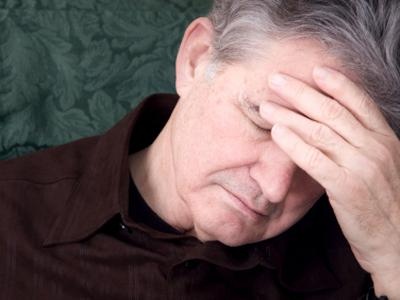
Depression can be a temporary passing experience or a deeply disturbing condition that may lead to suicide. Except in cases of minor depressive states, professional attention is generally recommended to help a person go through this emotional experience in a conscious manner.
The Real Dangers of Conventional Medical Treatment
Recent studies published in leading medical journals have seriously questioned the efficacy of conventional pharmaceutical treatment of people with mild or moderate depression.
In early 2010, major media reported on a significant review of research testing antidepressant medications.(1) What is unique about this review of research is that the researchers evaluated studies that were submitted to the U.S. Food and Drug Administration (FDA), though the researchers discovered that many studies submitted to the FDA were unpublished (they found that the unpublished research consistently showed negative results of antidepressants).

This meta-analysis of antidepressant medications found only modest benefits over placebo treatment in published research, but when unpublished trial data is included, the benefit falls below accepted criteria for clinical significance.
Perhaps most startling about this research is the fact the FDA only requires drug manufacturers to provide them with two positive studies on depression to attain FDA-approval status, even if these same drug companies submit many more studies with negative results. Such information forces consumers to question the efficacy of “FDA approved drugs,” and it explains why so many conventional medications eventually get withdrawn from marketplace.
At the same time that the above review research was published, another review of research was published in JAMA (Journal of the American Medical Association), and they found similar results, “The magnitude of benefit of antidepressant medication compared with placebo increases with severity of depression symptoms and may be minimal or nonexistent, on average, in patients with mild or moderate symptoms.”(2) These researchers did find benefits from the use of antidepressants in the treatment of severe depression, but because the majority of people taking antidepressants today do not have “severe depression,” it is prudent for many people with depression to talk to their doctors about safer and more effective alternatives.
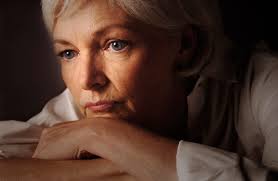
Sadly (and strangely), when conventional doctors today do not obtain adequately effective results with one drug, they often simply prescribe more drugs in hopes that one of them, or their combination, will be more effective (whether this increased use of drugs is effective or not, there are certain “benefits” that drug companies receive from this strategy). However, increasing research is finding that “polypharmacy” (the use of multiple drugs concurrently) may lead to worse, not better, results. New research has shown that polypharmacy with psychotropic medications in suicidal adolescent inpatients has been linked to a significantly increased risk for early readmission.(3)
Presented at Ohio State University and Nationwide Children’s Hospital, the researchers found that suicidal adolescent inpatients receiving three or more different classes of psychotropic medications had a 2.6-fold increased risk of being re-admitted within 30 days of discharge.
Cynthia A Fontanella, PhD, the lead researcher, asserted, “Our finding that polypharmacy was associated with an increased risk of readmission is concerning, although not surprising.” Even though the serious problems with polypharmacy are known and expected, polypharmacy is growing in mental health care, not decreasing.
Other researchers discovered a disturbing trend among the over 13,000 visits of outpatients with mental disorder diagnoses: the number of psychotropic medications prescribed increased in successive years. Visits in which two or more medications were prescribed increased from 42.6 percent in 1996-1997 to 59.8 percent in 2005-2006, and those in which at least 3 medications were prescribed virtually doubled from 16.9 percent to 33.2 percent.(4)

Why Mental Illness is Increasing
There are numerous theories for why the number of people suffering from mental illness is increasing and why it is afflicting people at younger and younger ages. The Homeopathic analysis for this epidemic is unique and may provide additional insight as to why this is occurring.
Like most observers of health and medicine today, Homeopaths do not believe that there is simply one reason for the increase in mental illness, though many Homeopaths assert that iatrogenesis (doctor-induced disease) plays a much greater role than is commonly recognized.
Homeopaths, like modern-day physiologists, understand that symptoms of illness represent the body’s defenses in its efforts to adapt to and respond against infection, environmental assault, or stress of some kind. As discomforting as symptoms can be, they still represent the living organism’s best efforts at the time to try to defend and heal him or herself. Such defenses are an innate part of our evolutionary efforts to survive. The symptoms that a person experiences are a part of the body’s innate wisdom, commonly referred to as “vis mediatrix naturae” (the healing power of nature).
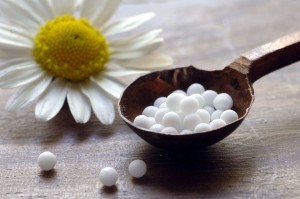
Using conventional medications to inhibit or suppress a symptom may be effective temporarily, but THIS is often the “bad news.” Because symptoms as diverse as fevers, coughs, nasal discharges, or even high blood pressure are recognized by physiologists as adaptations and defenses of the body, drugs that inhibit these symptoms may provide a short-term benefit, but such drugs also reduce the person’s ability to get over the illness. More significantly and more seriously, conventional medications may actually suppress the disease process and the wisdom of the body, thereby creating a deeper and more serious illness.
The irony to “modern scientific medicine” is that the evidence that doctors proudly show that a drug “works” is often actually evidence that the drug is effective in suppressing, not curing, a specific symptom (there are, of course, many exceptions to this general observation, such as antibiotics, but antibiotic drugs create other problems about which this writer and many others have commented already).
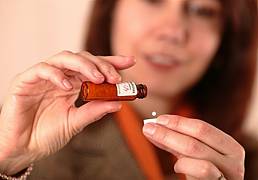
For over 200 years Homeopaths have observed the ability of many conventional drugs to suppress acute illness into more deep chronic illness. During this time, Homeopaths have also found that this disease suppression also creates more and greater mental illness. When reviewing the side-effects of many drugs, it is not uncommon to find that drugs are known to lead to various states of mental illness from depression to delusion to suicidal propensities.
Just as suppressing one’s emotions often leads to a later explosion of these emotions to someone who happens to be at the wrong place at the wrong time, suppressing physical symptoms can lead to a more serious physical disease or a more disturbing mental illness. Using drugs to provide temporary relief does have some type of cost, and the cost is usually a later and more serious ailment.
Homeopathic Treatment of Depression
The Menninger Clinic is world-renowned as one of the leading mental health centers for research and treatment. Most people don’t know it, but the founder of the Menninger Clinic, Charles Frederick Menninger, MD, was originally a Homeopathic physician. He was even the head of his local Homeopathic medicine society and was so frequently impressed with the results that he got from Homeopathic medicines, he once said, “Homeopathy is wholly capable of satisfying the therapeutic demands of this age better than any other system or school of medicine.” (5)
Numerous studies have shown benefits in using the herb, St. Johns wort, to treat mild to moderate depression. However, Homeopaths generally find that it is preferable to prescribe individualized Homeopathic remedies to each patient to attain better long-term sustained results without having to take continual doses of any medicine (natural or otherwise). In fact, a recent study published in a medical journal published by Oxford University Press found that individualized Homeopathic treatment is as effective and is safer than Prozac in the treatment of people with moderate or severe depression.(6)

This study included 91 outpatients with moderate to severe depression who received an individually chosen Homeopathic medicine or fluoxetine (Prozac) 20 mg/day (up to 40 mg/day) in a prospective, randomized, double-blind double-dummy eight week trial. The primary efficacy measure was the mean change in MADRS depression scores (MADRS is a commonly used observer rated depression scale, with a score of 32 representing the “severe depression”). The average MADRS of patients in this study was 29.
The mean MADRS scores differences were not significant on the fourth (p=0.654) and eigth weeks (p=0.965) of treatment, which suggests that the two methods are treatment are equally effective. There were also no significant differences between the percentages of response or remission rates in both groups. The study also found a higher but non-significant percentage of patients treated with Prozac reported troublesome side effects, and there was a trend toward greater treatment interruption for adverse effects in the Prozac group.
Those people who claim to be “skeptics” of Homeopathy will be surprised and impressed to know that two specialty medical journals published a double-blind and placebo controlled study on mice and found that one of the medicines in the above study, Gelsemium sempervirens, had anxiety-related effects.(7)(8)
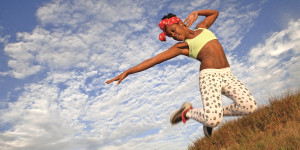
Jonathan Davidson, MD, a professor of psychiatry at Duke University, conducted a small study of adults with major depression, social phobia, or panic disorder. He found that 60 percent of the patients responded favorably to Homeopathic treatment.(9) When one recognizes the considerable safety of Homeopathic medicines and the benefits that some patients get from this safer method of treatment, it is remarkable that the majority of psychiatrists and psychologists do not yet refer appropriate patients to homeopaths prior to prescribing powerful conventional drugs for them.
A clinical outcome study of interest involved 14 physicians of the United Kingdom’s Faculty of Homeopathy (13 NHS GPs and 3 private practitioners) who treated a wide variety of people with chronic ailments.(10) The outcome scores from 958 individual patient conditions having two or more appointments found that 75.9 percent experienced a “positive outcome,” 14.7 percent had no change, and 4.6 percent experienced deterioration in health. Patients with the highest positive scores (over 50 percent of patients who self-scored a +2 or +3 on a 7 point Likert scale from -3 to +3) were achieved in the treatment of anxiety, catarrh, colic, cystitis, depression, eczema, irritable bowel syndrome, and PMS. A total of 63.6 percent of patients with depression self-scored a +2 or +3 result from Homeopathic treatment.
More information on the Homeopathic treatment of mental illness and more scientific evidence verifying its efficacy is contained in a newly published textbook on the subject, Homeopathy and Mental Health Care: Integrative Practice, Principles, and Research .
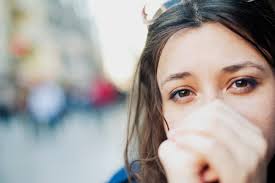
How NOT to Use Homeopathy for Depression
In early 2010, Alexa Ray Joel, the daughter of singer Billy Joel and actress/model Christy Brinkley, supposedly tried to kill herself by taking a Homeopathic medicine, called Traumeel. Anyone with the simply elementary knowledge of Homeopathy knows that one cannot commit suicide taking Homeopathic medicines due to the extremely small doses in these medicines. Even Homeopathy’s most ardent skeptics must have had a good laugh at this media report.
After the initial media report about Alexa Ray Joel’s suicide attempt, she went public with the fact that she suffered from depression as a result of a break-up in a relationship. And yet, Ms. Joel did not correct the misunderstanding of Homeopathic medicine or the assertions made claiming that she (or anyone) could kill themselves with a Homeopathic remedy. Sympathy is certainly appropriate for anyone who experiences such emotional trauma from the break-up of a love relationship to consider suicide. However, we should be wary of actions that inappropriately seek to tarnish the reputation of good companies or safe medicines.
Why Homeopathy Makes Sense for Depression
Homeopathic medicines are not prescribed based on the person’s diagnosed disease but on the unique way the person experiences his or her disease. In other words, Homeopathic medicines are prescribed based on the SYNDROME of various physical and psychological symptoms, not just a single symptom or disease label. Although the selection of the correct Homeopathic prescribing is more complex than the use of conventional drugs or even many herbal preparations, the system of prescribing that is individualized to the whole person is intellectually sound… and its results are often significant if not substantial.

The premise behind Homeopathy is that symptoms of illness are not just something “wrong” with the person but are actually efforts of their ‘bodymind’ to fight infection and/or to adapt to stress. Instead of using large doses of pharmacological agents to inhibit or suppress symptoms, very small and specially prepared doses of medicinal substances are individually prescribed to a person for their unique ability to cause in overdose the similar symptoms that the sick person is having. By finding a medicine that matches the symptoms of the sick person, the medicine supports and augments the body’s defenses. Ultimately, Homeopathy is what Stewart Brand, founder of the Whole Earth Catalog, called “medical aikido” because it goes with, rather than against, the force of the disease. It is also a type of “medical biomimicry.”
There is, indeed, much more that could be said about the sophisticated system of healing that Homeopathy embodies and on the historical and scientific evidence that verifies its safety and efficacy, but the above information and insights provide a good introduction to why people with mild to moderate depression might be consider seeking professional Homeopathic care.

Psychiatrist Wants Homeopathy
Dubai: A psychiatrist called upon the mental healthcare community to adopt Homoeopathy as a tool to treat disorders, and move away from conventional medicine that can have severe side effects.
Speaking at the second conference on Integrative Medicine Conference on Thursday, organised by Dubai Healthcare City Authority’s Centre for Healthcare Planning and Quality (CPQ), Dr Vengalis Zafeiriou highlighted the benefits of integrating Homoeopathy in psychiatric health care.
He said Homoeopathy can reduce the duration of hospitalisation, quantity of the medicine needed, number of laboratory examinations, frequency of relapses, and the individual and state health care costs. This form of alternative medicine also improves overall health and helps all chronic diseases, excluding irreversible tissue damage; it has no side effects and can be successfully combined with any other kind of treatment, he said.
The conference, titled ‘Advances in Evidence Based Integrative Medicine, held under the patronage of Princess Haya Bint Hussain, chairperson of Dubai Healthcare City Authority, and wife of His Highness Shaikh Mohammad Bin Rashid Al Maktoum, Vice-President and Prime Minister of the UAE and Ruler of Dubai, aimed to bridge the gap between conventional, complementary and alternative medicine through evidence-based integrative medicine case studies.
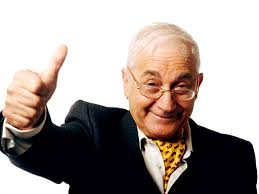
Dr Zafeiriou, Psychiatrist and President and Director of Education of the Hellenic Association of Homoeopathic Medical Cooperation in Greece, provided case studies of patients suffering from alcoholism and autism.
After his lecture, he spoke to Gulf News about the need to lobby for Homoeopathy in mental health care. “In psychiatry there aren’t any medicines designed to be curative, rather these relieve symptoms. Homeopathy can treat all kinds of disorders from anxiety and phobias to depression and schizophrenia. In mental hospitals, Homoeopathy can treat patients with severe mental disorders, contributing considerably to the therapeutic outcome of conventional psychiatric treatment.”
REFERENCES:
(1) Kirsch I, Deacon BJ, Huedo-Medina TB, Scoboria A, Moore TJ, et al. (2008) Initial Severity and Antidepressant Benefits: A Meta-Analysis of Data Submitted to the Food and Drug Administration. PLoS Med 5(2): e45. doi:10.1371/journal.pmed.0050045 http://www.plosmedicine.org/article/info:doi/10.1371/journal.pmed.0050045
(2) Fournier JC, DeRubeis RJ, Hollon SD, Dimidjian S, Amsterdam JD, Shelton RC, Fawcett J. Antidepressant Drug Effects and Depression Severity: A Patient-Level Meta-analysis. JAMA. 2010;303(1):47-53. http://jama.ama-assn.org/cgi/content/short/303/1/47?home
(3) Fontanella CA, Bridge JA, Campo JV. Psychotropic medication changes, polypharmacy, and the risk of early readmission in suicidal adolescent inpatients. Ann Pharmacother. 2009 Dec;43(12):1939-47.
(4) Mojtabai R, Olfson M. National Trends in Psychotropic Medication Polypharmacy in
Office-Based Psychiatry. Arch Gen Psychiatry. 2010;67:26-36.
(5) Menninger, C. F. The Application as Well as the Similar, Transactions of the American Institute of Homeopathy, 1896, pp. 317-324.
(6) Adler UC, Paiva NMP, Cesar AT, Adler MS, Molina A, Padula AE, Calil HM. Homeopathic individualized Q-potencies versus fluoxetine for moderate to severe depression: double-blind, randomized non-inferiority trial. Evid Based Complement Alternat Med. 2009 Aug 17. http://ecam.oxfordjournals.org/cgi/content/full/nep114v1
(7) Bellavite P, Magnani P, Zanolin E, Conforti A. Homeopathic Doses of Gelsemium sempervirens Improve the Behavior of Mice in Response to Novel Environments. Evid Based Complement Alternat Med. 2009 Sep 14. http://www.ncbi.nlm.nih.gov/pubmed/19752165?dopt=Abstract
(8) Magnani P, Conforti A, Zanolin E, Marzotto M, Bellavite P. Dose-effect study of Gelsemium sempervirens in high dilutions on anxiety-related responses in mice. Psychopharmacology (Berl). 2010 Apr 20.
(9) Davidson, J, Morrison, R, Shore, J, et al., Homeopathic Treatment of Depression and Anxiety,” Alternative Therapies, January, 1997,3,1:46-49.
(10) Mathie, RT, Robinson, TW. Outcomes from Homeopathic Practice in Medical Practice: A Prospective, Research-Tarageted, Pilot Study, Homeopathy. 2006,95:199-205.
-Dana Ullman
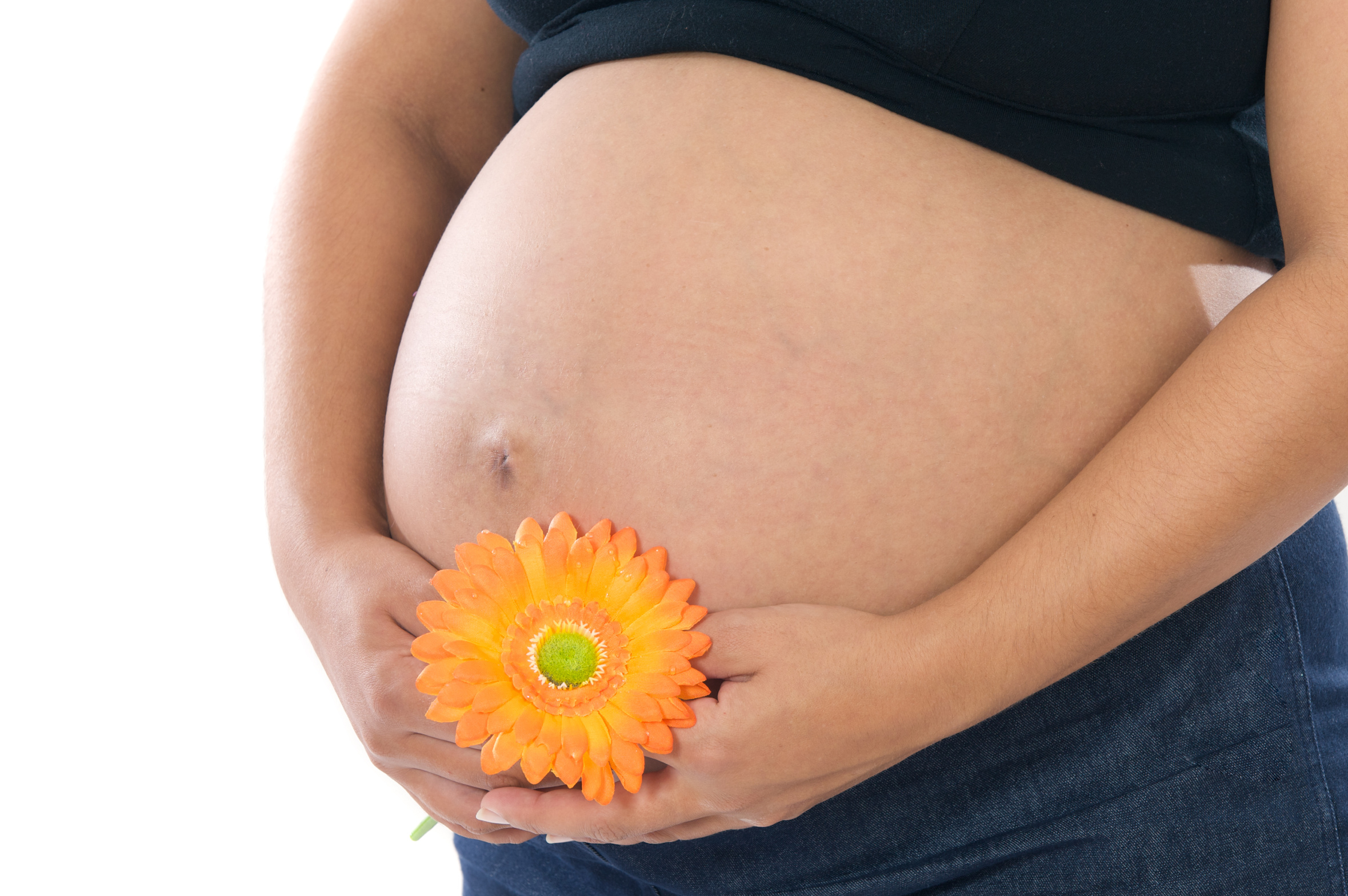
Homeopathic medicine can help enormously in the prenatal period, with the birth of the baby and in avoiding or reducing some of the problems associated with labor, as well as in dealing with postnatal symptoms.
False labor
Labor-like contractions may occur in the last few weeks of pregnancy and are felt irregularly, usually in the lower part of the abdomen. These are said to occur because the uterus (womb) is ‘toning-up’ in preparation for the birth. If the contractions become very frequent or regular, or if there is a ‘show’ of blood, the doctor or midwife should be called.
Symptoms: Contractions that occur in the last few weeks of pregnancy. Inertia of the uterus. Labor delayed. Contractions have no coordination and may change in location. Labor is ineffectual. Prime indications for the remedy are the typical uterine dysfunction, with weakness and trembling, neuralgic or rheumatic pains mainly in the bladder, vagina and intestines. These pains are sharp, short and spasmodic and tend to fly about from place to place. Generally cold and worse from cold. There may also be apprehension and nervous excitability.
Medicine: Caulophyllum
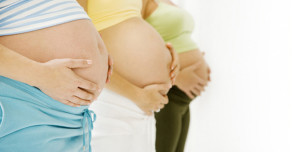 Symptoms: Contractions that occur early in the pregnancy. Pain shoots across the abdomen, causing doubling up. Uterine dysfunction with pessimism, fear, and mental fragmentation. Feels something terrible is going to happen. Terrifying memories of previous births or miscarriages. May say something like “I feel enveloped by a black cloud.” Gloomy, morose, fears insanity. Sighing. Hysteria. Pain, headache, neuralgia, rheumatism, arthritis, chilly; worse cold (except headache which improves from cold.) Nervous phenomena (nausea, insomnia, palpitations, numbness, etc..) The mental state differentiates this remedy from Caulophyllum.
Symptoms: Contractions that occur early in the pregnancy. Pain shoots across the abdomen, causing doubling up. Uterine dysfunction with pessimism, fear, and mental fragmentation. Feels something terrible is going to happen. Terrifying memories of previous births or miscarriages. May say something like “I feel enveloped by a black cloud.” Gloomy, morose, fears insanity. Sighing. Hysteria. Pain, headache, neuralgia, rheumatism, arthritis, chilly; worse cold (except headache which improves from cold.) Nervous phenomena (nausea, insomnia, palpitations, numbness, etc..) The mental state differentiates this remedy from Caulophyllum.
Medicine: Cimicifuga
Symptoms: Pain goes up the back and into the hips. Splendid remedy for dysfunctional labor with failure to dilate, especially when coupled with acute inflammation and fever, chilly, thirstless, achy muscles, great fatigue; profound muscular weakness, trembling, shivering, comes on from emotional excitement and/or anticipation. Vertigo. Face flushed and sleepy looking. “worn out” expression. Sleepy and weak during labor. Timid, quiet, reserved.
Medicine: Gelsemium
Symptoms: Specific remedy for uterine dysfunction, false labor and after pains. Keynotes are that the pains raidate from the sacrum into the pelvis and into the upper, inner thighs. Colicky, cramp-like pains.
Medicine: Viburnum opulus
Dosage: Use the 12c potency.Take every hour until the pains cease.
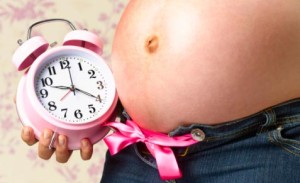 Preparing for delivery
Preparing for delivery
Taking Caulophyllum in the last weeks of the pregnancy and Arnica, before delivery, will minimize much of the bruising and bleeding. Caulophyllum is also said to ‘tone up’ the uterus, helping to produce good contractions and lessening the chances of becoming over tired during labor.
Symptoms: Reduces the bruising and bleeding of normal labor.
Medicine: Arnica montana
Dosage: Arnica should be taken in the highest potency you can obtain — the 10m potency powder form if possible. If not, use the 30c potency in powder form. If you cannot obtain a powder, simply crush one tablet for one dose. Take one dose at the start of labor and one during labor just before delivery. It is useful to take a 30c dose three times a day for three days after the birth of the baby.
Symptoms: Used routinely to help uterine contractions and to bring about a smooth delivery.
Medicine: Caulophyllum
Dosage: Caulophyllum should be taken in the 30c potency — three doses on the same day each week from the 34th week onwards. There is no clinical evidence that this Homeopathic medicine causes women to go into labor too early. This is specifically mentioned because Caulophyllum in normal — that is, non-Homeopathic doses — may cause early labor. Used Homeopathically, it is given to prevent premature labor and to help normal labor.
Symptoms: May help if there was heavy bleeding in a previous pregnancy.
Medicine: Millefolium
Dosage: Millefolium should be taken in the 30c potency. Take three doses on one day in the last week of the pregnancy.
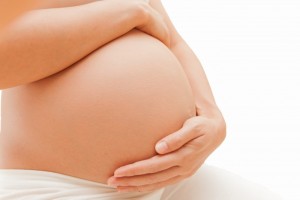 In early labor
In early labor
A normal pregnancy lasts for 40 weeks. For a few weeks before the birth occasional painless ‘contractions’ may be felt in the lower abdomen (see False Labor above). When labor proper begins, the contractions become noticeable but may be infrequent and irregular. As labor proceeds, they become more frequent and occur at regular intervals. They may also produce some discomfort. At first they are often felt in the back. The start of labor may be indicated by a small blood loss called a ‘bloody show’.
At some stage the membranes in which the baby is contained will rupture, producing a loss of a watery fluid from the vagina. This is perfectly normal. The actual duration of labor varies tremendously, but is lengthier with a first pregnancy, so there is usually plenty of time in which to get to hospital, birth center, or for the midwife to arrive if delivery is to be at home.
Symptoms: When the labor pains are frequent, but irregular. A good remedy if restless, anxious and frightened and convinced of dying during labor.
Medicine: Aconitum
Symptoms: Painful labor, with the pain starting in lower back and radiating to inner part of the thighs.The woman may be over-excited and angry, and resent being examined. Exquisitely intolerant of pain.
Medicine: Chamomilla
Symptoms: Spasmodic irregular pains in the small of the back. Feelings of exhaustion and being out of control.
Medicine: Cocculus
Symptoms: Contractions are very painful but ineffective. The woman is restless and agitated.
Medicine: Coffea cruda
Symptoms: Intermittent, relatively painless contractions with little progress. Excessive tiredness.
Medicine: Gossypium
Symptoms: Early labor pains in back.
Medicine: Kali carbonicum
Dosage: Use the 12c potency. Take every 30 minutes until relief is maintained.
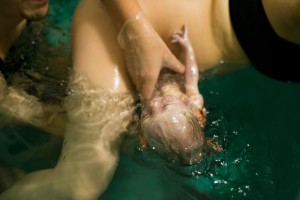 Immediately after delivery
Immediately after delivery
The Mother’s main problems after the birth will be related to bruising in the birth passage and surrounding organs, such as the bladder and urethra.
With a prolonged labor, especially one that has caused much sleep deprivation, fatigue can also be a problem, but this is easily remedied by a good night’s sleep. The main problems after a birth by Caesarean section tend to be those that can occur after any surgical procedure.
Most of these complications are unlikely, however, if the woman has been treated with Arnica and Caulophyllum, as described above.
(See also the section on After-pains below.)
Postpartum Hemorrhage
Once a baby is delivered, the uterus normally continues to contract (tightening of uterine muscles) and expels the placenta. After the placenta is delivered, these contractions help compress the bleeding vessels in the area where the placenta was attached. If the uterus does not contract strongly enough, called uterine atony, these blood vessels bleed freely and hemorrhage occurs. This is the most common cause of Postpartum Hemorrhage (PPH). If small pieces of the placenta remain attached, bleeding is also likely.
Postpartum Hemorrhage is excessive bleeding following the birth of a baby. About 1% to 5% of women have Postpartum Hemorrhage and it is more likely with a cesarean birth. Hemorrhage most commonly occurs after the placenta is delivered. The average amount of blood loss after the birth of a single baby in vaginal delivery is about 500 ml (or about a half of a quart). The average amount of blood loss for a cesarean birth is approximately 1,000 ml (or one quart). Most Postpartum Hemorrhage occurs right after delivery, but it can occur later as well.
PPH is a medical emergency. Excessive and rapid blood loss can cause a severe drop in the Mother’s blood pressure and may lead to shock and death if not treated.
*The use of Homeopathy should be in conjunction with seeking immediate medical attention.
 Symptoms: Postpartum Hemorrhage. Bleeding is typically forceful and gushing, with bright red blood and Dark Clots. Girdle-like pains from sacrum to pubis in the process of expelling them. Retained placenta or after pains my also complicate the picture.
Symptoms: Postpartum Hemorrhage. Bleeding is typically forceful and gushing, with bright red blood and Dark Clots. Girdle-like pains from sacrum to pubis in the process of expelling them. Retained placenta or after pains my also complicate the picture.
Medicine: Sabina
Symptoms: Postpartum Hemorrhage. Bright red blood; No Clots. This remedy should be considered when other important keynotes are present such as tremendous thirst for cold drinks, fear of being alone and of the dark, open, bright suggestible patients, who are anxious, and easily reassured.
Medicine: Phosphorus
Symptoms: Postpartum Hemorrhage. Splendid remedy for the treatment of passive uterine bleeding with muscle fatigue and general exhaustion with persistent oozing of dark, this or even watery blood. . Leading indications are shock-like symptoms, as would be expected from excessive blood loss: Faintness, thirst, and extreme chilliness with nervous shivering and relief from warmth in any form. Gassy distension, headache, heightened sensitivity to touch, noise, or other external stimulation.
Medicine: China
Other Issues
Symptoms: Difficulty passing urine. Restless, sleepless and frightened.
Medicine: Aconitum
Symptoms: Constipation. Rectum feels sore and anus itches. Even a soft stool is passed with difficulty.
Medicine: Alumina
Symptoms: Problems passing urine
Medicine: Arsenicum album
Symptoms: Irritation of the vulva. Cramp-like pains occur in the uterus (womb), mainly at night.
Medicine: Caladium seguinum
Symptoms: Retention of urine, especially after a long labor.
Medicine: Causticum
Symptoms: Nervousness and restlessness.
Medicine: Chamomilla
Symptoms: Excited, oversensitive and suffers from insomnia. Abdominal pains.
Medicine: Coffea cruda
 Symptoms: Painful hemorrhoids.
Symptoms: Painful hemorrhoids.
Medicine: Collinsonia
Symptoms: Flatulence and abdominal colic.
Medicine: Nux moschata
Symptoms: Back pain. Itching between the breasts. Apathy.
Medicine: Phosporic acid
Symptoms: Hemorrhoids and anal prolapse occur.
Medicine: Podophyllum
Symptoms: Total exhaustion and overheating.
Medicine: Secale cornutum
Symptoms: To aid healing if there has been catheterization or an episiotomy.
Medicine: Staphysagria
Dosage: Use the 12c potency. Take three times a day for five days.
After pains
These pains are similar to labor pains and may occur after childbirth. They are a result of the uterus (womb) contracting as it reduces to its size before the pregnancy.
The pains are more likely to occur to Breastfeeding Mothers, as Breastfeeding causes the pituitary gland to release the hormone Oxytocin, which helps with milk production, and may also stimulate some uterine contractions. Natures way of stopping the bleeding and reducing the uterus back to it’s normal size.
Symptoms: Used routinely after all labors, especially if labor has been protracted.
Medicine: Arnica montana
Symptoms: After pains with a headache, flushed face, nervousness, restlessness.
Medicine: Belladonna
Symptoms: Soreness felt all through the pelvis, making walking and standing painful.
Medicine: Bellis perennis
 Symptoms: Severe, cramp-like pains.
Symptoms: Severe, cramp-like pains.
Medicine: Camphora
Symptoms: Spasmodic pains occur which move across the lower abdomen, especially after a prolonged and exhausting labor. Quite specifically for after-pains.
Medicine: Caulophyllum
Symptoms: Severe pain causing great irritability.
Medicine: Chamomilla
Symptoms: Intense pains like electric shocks in the groin. Agitated and intolerant of pain.
Medicine: Cimicifuga
Symptoms: Pains which feel as if they are in the intestines rather than the uterus.
Medicine: Cocculus
Symptoms: Extreme pain causing sleeplessness.
Medicine: Coffea cruda
Symptoms: Distressing after-pains after pregnancy that is not the first.
Medicine: Cuprum metallicum
 Symptoms: Anxious, apprehensive, sleepless.
Symptoms: Anxious, apprehensive, sleepless.
Medicine: Gelsemium
Symptoms: Severe after-pains shoot down the thighs and are worse on the right. Pain appears to be in the rectum or the bladder.
Medicine: Lac caninum
Symptoms: Large blood clots may be passed. Much flatulence.
Medicine: Nux vomica
Symptoms: Pain shoots forwards from behind.
Medicine: Sabina
Symptoms: A sensation of a weight in the lower bowel. Pelvic organs feel as though they are about to drop out. More often indicated after labor than in the middle of it, this is a great remedy and can relieve the characteristic heaviness and bearing down pains. Used chiefly for bleeding, retained placenta, prolapse, and other postpartum complaints. Pain radiates upwards.
Medicine: Sepia
Symptoms: Use this, if there are no other symptoms and no other Homeopathic remedy seems to fit.
Medicine: Xanthoxylum
Dosage: Use the 30c potency. Take four times a day for two days after delivery.

Happy Healthy Mother and Baby
Note: The information here is not intended to replace medical advice offered by your Health Care Provider, Midwife or Homeopath.
Please see your health care professional.
References:
Desktop Guide by, Roger Morrison, M.D.
Homeopathic Medicines for Pregnancy and Childbirth by, Richard Moskowitz, M.D.
Homeopathy for Women by, Dr Barry Rose and Dr Christina Scott-Moncrieff, published by Collins & Brown.
*Homeopathy is also safe and effective while Breastfeeding! Homeopathy is often useful in situations such as low-milk supply and/or over-supply, sore nipples, breast infection, weaning, etc.. This is a helpful modality of healing for new Mothers, as it is completely safe while breastfeeding, and for babies and children.
Please see: www.lactation-911.com/
www.lactation-911.com/homeopathy-and-breastfeeding
Dr. Luc Montagnier, the French virologist who won the Nobel Prize in 2008 for discovering the AIDS virus, has surprised the Scientific Community with his strong support for Homeopathic medicine.
In a remarkable interview published in Science magazine of December 24, 2010, (1) Professor Luc Montagnier, has expressed support for the often maligned and misunderstood medical specialty of Homeopathic medicine. Although Homeopathy has persisted for 200+ years throughout the world and has been the leading alternative treatment method used by physicians in Europe, (2) most conventional physicians and scientists have expressed skepticism about its efficacy, due to the extremely small doses of medicines used.
Most clinical research conducted on Homeopathic medicines that has been published in peer-review journals have shown positive clinical results,(3, 4) especially in the treatment of respiratory allergies (5, 6), influenza, (7) fibromyalgia, (8, 9) rheumatoid arthritis, (10) childhood diarrhea, (11) post-surgical abdominal surgery recovery, (12) attention deficit disorder, (13) and reduction in the side effects of conventional cancer treatments. (14) In addition to clinical trials, several hundred basic science studies have confirmed the biological activity of Homeopathic medicines. One type of basic science trials, called in vitro studies, found 67 experiments (1/3 of them replications) and nearly 3/4 of all replications were positive. (15, 16)
In addition to the wide variety of basic science evidence and clinical research, further evidence for Homeopathy resides in the fact that they gained widespread popularity in the U.S. and Europe during the 19th century due to the impressive results people experienced in the treatment of epidemics that raged during that time, including cholera, typhoid, yellow fever, scarlet fever, and influenza.
Montagnier, who is also founder and president of the World Foundation for AIDS Research and Prevention, asserted, “I can’t say that Homeopathy is right in everything. What I can say now is that the high dilutions (used in Homeopathy) are right. High dilutions of something are not nothing. They are water structures which mimic the original molecules.”
Here, Montagnier is making reference to his experimental research that confirms one of the controversial features of Homeopathic medicine that uses doses of substances that undergo sequential dilution with vigorous shaking in-between each dilution. Although it is common for modern-day scientists to assume that none of the original molecules remain in solution, Montagnier’s research (and other of many of his colleagues) has verified that electromagnetic signals of the original medicine remains in the water and has dramatic biological effects.
Montagnier has just taken a new position at Jiaotong University in Shanghai, China (this university is often referred to as “China’s MIT”), where he will work in a new institute bearing his name. This work focuses on a new scientific movement at the crossroads of physics, biology, and medicine: the phenomenon of electromagnetic waves produced by DNA in water. He and his team will study both the theoretical basis and the possible applications in medicine.
Montagnier’s new research is investigating the electromagnetic waves that he says emanate from the highly diluted DNA of various pathogens. Montagnier asserts, “What we have found is that DNA produces structural changes in water, which persist at very high dilutions, and which lead to resonant electromagnetic signals that we can measure. Not all DNA produces signals that we can detect with our device. The high-intensity signals come from bacterial and viral DNA.”
Montagnier affirms that these new observations will lead to novel treatments for many common chronic diseases, including, but not limited to Autism, Alzheimer’s disease, Parkinson’s disease, and Multiple Sclerosis.
Montagnier first wrote about his findings in 2009, (17) and then, in mid-2010, he spoke at a prestigious meeting of fellow Nobelists where he expressed interest in Homeopathy and the implications of this system of medicine. (18)
French retirement laws do not allow Montagnier, who is 78 years of age, to work at a public institute, thereby limiting access to research funding. Montagnier acknowledges that getting research funds from Big Pharma and certain other conventional research funding agencies is unlikely due to the atmosphere of antagonism to Homeopathy and natural treatment options.
Support from Another Nobel Prize winner
Montagnier’s new research evokes memories one of the most sensational stories in French science, often referred to as the ‘Benveniste affair.’ A highly respected immunologist Dr. Jacques Benveniste., who died in 2004, conducted a study which was replicated in three other university laboratories and that was published in Nature (19). Benveniste and other researchers used extremely diluted doses of substances that created an effect on a type of white blood cell called basophils.
Although Benveniste’s work was supposedly debunked, (20) Montagnier considers Benveniste a “modern Galileo” who was far ahead of his day and time and who was attacked for investigating a medical and scientific subject that orthodoxy had mistakenly overlooked and even demonized.
In addition to Benveniste and Montagnier is the weighty opinion of Brian Josephson, Ph.D., who, like Montagnier, is a Nobel Prize-winning scientist.
Responding to an article on Homeopathy in New Scientist, Josephson wrote:
Regarding your comments on claims made for Homeopathy: criticisms centered around the vanishingly small number of solute molecules present in a solution after it has been repeatedly diluted are beside the point, since advocates of Homeopathic remedies attribute their effects not to molecules present in the water, but to modifications of the water’s structure.
Simple-minded analysis may suggest that water, being a fluid, cannot have a structure of the kind that such a picture would demand. But cases such as that of liquid crystals, which while flowing like an ordinary fluid can maintain an ordered structure over macroscopic distances, show the limitations of such ways of thinking. There have not, to the best of my knowledge, been any refutations of Homeopathy that remain valid after this particular point is taken into account.
A related topic is the phenomenon, claimed by Jacques Benveniste’s colleague Yolène Thomas and by others to be well established experimentally, known as “memory of water.” If valid, this would be of greater significance than Homeopathy itself, and it attests to the limited vision of the modern scientific community that, far from hastening to test such claims, the only response has been to dismiss them out of hand. (21)
Following his comments Josephson, who is an emeritus professor of Cambridge University in England, was asked by New Scientist editors how he became an advocate of unconventional ideas. He responded:
I went to a conference where the French immunologist Jacques Benveniste was talking for the first time about his discovery that water has a ‘memory’ of compounds that were once dissolved in it — which might explain how Homeopathy works. His findings provoked irrationally strong reactions from scientists, and I was struck by how badly he was treated. (22)
Josephson went on to describe how many scientists today suffer from “pathological disbelief;” that is, they maintain an unscientific attitude that is embodied by the statement “even if it were true I wouldn’t believe it.”
Even more recently, Josephson wryly responded to the chronic ignorance of Homeopathy by its skeptics saying, “The idea that water can have a memory can be readily refuted by any one of a number of easily understood, invalid arguments.”
In the new interview in Science, Montagnier also expressed real concern about the unscientific atmosphere that presently exists on certain unconventional subjects such as Homeopathy, “I am told that some people have reproduced Benveniste’s results, but they are afraid to publish it because of the intellectual terror from people who don’t understand it.”
Montagnier concluded the interview when asked if he is concerned that he is drifting into pseudoscience, he replied adamantly: “No, because it’s not pseudoscience. It’s not quackery. These are real phenomena which deserve further study.”
The Misinformation That Skeptics Spread
It is remarkable enough that many skeptics of Homeopathy actually say that there is “no research” that has shows that Homeopathic medicines work. Such statements are clearly false, and yet, such assertions are common on the Internet and even in some peer-review articles. Just a little bit of searching can uncover many high quality studies that have been published in highly respected medical and scientific journals, including the Lancet, BMJ, Pediatrics, Pediatric Infectious Disease Journal, Chest and many others. Although some of these same journals have also published research with negative results to Homeopathy, there is simply much more research that shows a positive rather than negative effect.
Misstatements and misinformation on Homeopathy are predictable because this system of medicine provides a viable and significant threat to economic interests in medicine, let alone to the very philosophy and worldview of biomedicine. It is therefore not surprising that the British Medical Association had the sheer audacity to refer to Homeopathy as “witchcraft.” It is quite predictable that when one goes on a witch hunt, one inevitable finds “witches,” especially when there are certain benefits to demonizing a potential competitor (Homeopathy plays a much larger and more competitive role in Europe than it does in the USA).
Skeptics of Homeopathy also have long asserted that Homeopathic medicines have “nothing” in them because they are diluted too much. However, new research conducted at the respected Indian Institutes of Technology has confirmed the presence of “nanoparticles” of the starting materials even at extremely high dilutions. Researchers have demonstrated by Transmission Electron Microscopy (TEM), electron diffraction and chemical analysis by Inductively Coupled Plasma-Atomic Emission Spectroscopy (ICP-AES), the presence of physical entities in these extreme dilutions. (24) In the light of this research, it can now be asserted that anyone who says or suggests that there is “nothing” in Homeopathic medicines is either simply uninformed or is not being honest.
Because the researchers received confirmation of the existence of nanoparticles at two different homeopathic high potencies (30C and 200C) and because they tested four different medicines (Zincum met./zinc; Aurum met. /gold; Stannum met./tin; and Cuprum met./copper), the researchers concluded that this study provides “concrete evidence.”
Although skeptics of Homeopathy may assume that Homeopathic doses are still too small to have any biological action, such assumptions have also been proven wrong. The multi-disciplinary field of small dose effects is called “hormesis,” and approximately 1,000 studies from a wide variety of scientific specialties have confirmed significant and sometimes substantial biological effects from extremely small doses of certain substances on certain biological systems.
A special issue of the peer-review journal, Human and Experimental Toxicology (July 2010), devoted itself to the interface between hormesis and Homeopathy. (25) The articles in this issue verify the power of Homeopathic doses of various substances.
In closing, it should be noted that skepticism of any subject is important to the evolution of science and medicine. However, as noted above by Nobelist Brian Josephson, many scientists have a “pathological disbelief” in certain subjects that ultimately create an unhealthy and unscientific attitude blocks real truth and real science. Skepticism is at its best when its advocates do not try to cut off research or close down conversation of a subject but instead explore possible new (or old) ways to understand and verify strange but compelling phenomena. We all have this challenge as we explore and evaluate the biological and clinical effects of Homeopathic medicines.
REFERENCES:
(1) Enserink M, Newsmaker Interview: Luc Montagnier, French Nobelist Escapes “Intellectual Terror” to Pursue Radical Ideas in China. Science 24 December 2010: Vol. 330 no. 6012 p. 1732. DOI: 10.1126/science.330.6012.1732
(2) Ullman D. Homeopathic Medicine: Europe’s #1 Alternative for Doctors. http://www.huffingtonpost.com/dana-ullman/homeopathic-medicine-euro_b_402490.html
(3) Linde L, Clausius N, Ramirez G, et al., “Are the Clinical Effects of Homoeopathy Placebo Effects? A Meta-analysis of Placebo-Controlled Trials,” Lancet, September 20, 1997, 350:834-843.
(4) Lüdtke R, Rutten ALB. The conclusions on the effectiveness of homeopathy highly depend on the set of analyzed trials. Journal of Clinical Epidemiology. October 2008. doi: 10.1016/j.jclinepi.2008.06/015.
(5) Taylor, MA, Reilly, D, Llewellyn-Jones, RH, et al., Randomised controlled trial of homoeopathy versus placebo in perennial allergic rhinitis with overview of four trial Series, BMJ, August 19, 2000, 321:471-476.
(6) Ullman, D, Frass, M. A Review of Homeopathic Research in the Treatment of Respiratory Allergies. Alternative Medicine Review. 2010:15,1:48-58. http://www.thorne.com/altmedrev/.fulltext/15/1/48.pdf
(7) Vickers AJ. Homoeopathic Oscillococcinum for preventing and treating influenza and influenza-like syndromes. Cochrane Reviews. 2009.
(8) Bell IR, Lewis II DA, Brooks AJ, et al. Improved clinical status in fibromyalgia patients treated with individualized homeopathic remedies versus placebo, Rheumatology. 2004:1111-5.
(9) Fisher P, Greenwood A, Huskisson EC, et al., “Effect of Homoeopathic Treatment on Fibrositis (Primary Fibromyalgia),” BMJ, 299(August 5, 1989):365-6.
(10) Jonas, WB, Linde, Klaus, and Ramirez, Gilbert, “Homeopathy and Rheumatic Disease,” Rheumatic Disease Clinics of North America, February 2000,1:117-123.
(11) Jacobs J, Jonas WB, Jimenez-Perez M, Crothers D, Homeopathy for Childhood Diarrhea: Combined Results and Metaanalysis from Three Randomized, Controlled Clinical Trials, Pediatr Infect Dis J, 2003;22:229-34.
(12) Barnes, J, Resch, KL, Ernst, E, “Homeopathy for Post-Operative Ileus: A Meta-Analysis,” Journal of Clinical Gastroenterology, 1997, 25: 628-633.
(13) M, Thurneysen A. Homeopathic treatment of children with attention deficit hyperactivity disorder: a randomised, double blind, placebo controlled crossover trial. Eur J Pediatr. 2005 Dec;164(12):758-67. Epub 2005 Jul 27.
(14) Kassab S, Cummings M, Berkovitz S, van Haselen R, Fisher P. Homeopathic medicines for adverse effects of cancer treatments. Cochrane Database of Systematic Reviews 2009, Issue 2.
(15) Witt CM, Bluth M, Albrecht H, Weisshuhn TE, Baumgartner S, Willich SN. The in vitro evidence for an effect of high homeopathic potencies–a systematic review of the literature. Complement Ther Med. 2007 Jun;15(2):128-38. Epub 2007 Mar 28.
(16) Endler PC, Thieves K, Reich C, Matthiessen P, Bonamin L, Scherr C, Baumgartner S. Repetitions of fundamental research models for homeopathically prepared dilutions beyond 10-23: a bibliometric study. Homeopathy, 2010; 99: 25-36.
(17) Luc Montagnier, Jamal Aissa, Stéphane Ferris, Jean-Luc Montagnier, Claude Lavallee, Electromagnetic Signals Are Produced by Aqueous Nanostructures Derived from Bacterial DNA Sequences. Interdiscip Sci Comput Life Sci (2009) 1: 81-90.
http://www.springerlink.com/content/0557v31188m3766x/fulltext.pdf
(18) Nobel laureate gives homeopathy a boost. The Australian. July 5, 2010. http://www.theaustralian.com.au/news/health-science/nobel-laureate-gives-homeopathy-a-boost/story-e6frg8y6-1225887772305
(19) Davenas E, Beauvais F, Amara J, et al. (June 1988). “Human basophil degranulation triggered by very dilute antiserum against IgE”. Nature 333 (6176): 816-8.
(20) Maddox J (June 1988). “Can a Greek tragedy be avoided?”. Nature 333 (6176): 795-7.
(21) Josephson, B. D., Letter, New Scientist, November 1, 1997.
(22) George A. Lone Voices special: Take nobody’s word for it. New Scientist. December 9, 2006.
(23) Personal communication. Brian Josephson to Dana Ullman. January 5, 2011.
(24) Chikramane PS, Suresh AK, Bellare JR, and Govind S. Extreme homeopathic dilutions retain starting materials: A nanoparticulate perspective. Homeopathy. Volume 99, Issue 4, October 2010, 231-242.
(25) Human and Experimental Toxicology, July 2010: http://het.sagepub.com/content/vol29/issue7/
To access free copies of these articles, see: http://www.siomi.it/siomifile/siomi_pdf/BELLE_newsletter.pdf
*Homeopathy is also safe and effective while Breastfeeding! This is a helpful modality of healing for new Mothers, as it is completely safe while breastfeeding, and for babies and children.
Please see: www.lactation-911.com/
www.lactation-911.com/homeopathy-and-breastfeeding
Famous People Love Homeopathy!
There is a good reason that 11 American presidents, 7 popes, Charles Darwin, J.D. Rockefeller, David Beckham, Tina Turner, and Mother Teresa have used and advocated for Homeopathic treatment: Homeopathy works!

Just Some of the Famous People who use Homeopathy
The majority of people in Western society seek out conventional medical treatment, but an amazing and impressive number of cultural heroes and celebrities of the past 200 years have been treated with and raved about Homeopathic medicine. Through a cutting-edge explanation of Homeopathy as “nanopharmacology,” Dana Ullman’s book: Homeopathic Revolution: Why Famous People and Cultural Heroes Choose Homeopathy presents a strong case for this internationally respected, but often misunderstood, medical practice.
In his book: The Homeopathic Revolution, Dana Ullman uncovers a veritable treasure – trove of stories from cultural heroes of the past 200 years. Of special interest are the riveting anecdotes of literary greats, sports superstars, physicians, scientists, celebrities, musicians, artists, fashionistas, corporate leaders, philanthropists, clergy, spiritual leaders, and monarchs.
Modern-day cultural heroes and their Homeopathic treatment:
• Tina Turner – tuberculosis (Chapter 7: Musicians, Pages 162-163)

Tina Turner
• Cher – recurrent pneumonia and chronic fatigue (Chapter 7: Musicians, Pages 165-166)
• David Beckham – a broken foot just prior to the 2002 World Cup (Chapter 4: Sports Superstars, Pages 89-90)

Cher
• Pete Townshend – hearing difficulties (Chapter 7: Musicians, Pages 164-165)
• Nancy Davis – (philanthropist), multiple sclerosis (Chapter 11: Corporate Leaders and Philanthropists, Pages 266-267)
• Nelly Furtado – jet lag (Chapter 7: Musicians, Page 168)

Bill Clinton
• Bill Clinton-recurrent laryngitis (Chapter 9: Politicians and Peacemakers, Page 208)
• Robin McGraw – (wife of “Dr. Phil” McGraw), hot flashes of menopause (Chapter 6: Stage, Film and Television Celebrities, Page 145)

Johnny Depp
• Jade Jagger – chronic eczema (Chapter 8: Artists and Fashionistas, Page 179)
• Catherine Zeta-Jones – sprains and strains from overexertion during the filming of Chicago (Chapter 6: Stage, Film and Television Celebrities, Pages 139-140)

Catherine Zeta-Jones
• Jose Maria Olazabal – (pro golfer), rheumatoid polyarthritis (arthritis in multiple joints) (Chapter 4: Sports Superstars, Page 91)
• Pamela Anderson – hepatitis C (Chapter 6: Stage, Film and Television Celebrities, Pages 141-142)

Pamela Anderson
• Norman Cousins – (author, editor), heart attack recovery (Chapter 3: Literary Greats, Pages 82-84)
Stories from the past:
• Ludwig van Beethoven – spitting blood and colitis (Chapter 7: Musicians, Pages 154-156)
• Charles Darwin – chronic and persistent nausea and vomiting, heart palpitations, fainting spells, and spots before his eyes (Chapter 5: Physicians and Scientists, Pages 104-114)

Charles Darwin
• Alfred Tennyson – (poet), petit mal seizures and a nervous breakdown (Chapter 3: Literary Greats, Page 80)
• George Bernard Shaw – (playwright), hydrocele (Chapter 3: Literary Greats, Pages 77-78)
• Washington Irving – (author), asthma, recurrent dizziness, and chronic headaches (Chapter 3: Literary Greats, Pages 70-71)

Paul McCartney
• Richard Wagner – (composer and conductor), typhoid (saved his life) (Chapter 7: Musicians, Pages 159-160)
• General George B. McClellan – (head of the Union Army during the U.S. Civil War), typhoid (Chapter 9: Politicians and Peacemakers, Pages 184-185.

Cindy Crawford
• Benjamin Disraeli – (British Prime Minister), asthma and gout (Chapter 9: Politicians and Peacemakers, Pages 199-200)
• Harold Griffith, MD – (one of the fathers of modern anesthesia), diphtheria (Chapter 5: Physicians and Scientists, Pages 122-124)

Dana Ullman
Dana Ullman, America’s leading spokesperson for Homeopathy, has authored 10 books on the subject, and has taught or served on advisory boards of alternative medicine institutes at Harvard, Columbia, University of Arizona, and University of Alaska. He lives in Berkeley, CA.
*Homeopathy is also safe and effective while Breastfeeding! This is a helpful modality of healing for new Mothers, as it is completely safe while breastfeeding, and for babies and children.
Please see: www.lactation-911.com/
www.lactation-911.com/homeopathy-and-breastfeeding

I was a dedicated Scientist about to begin a PhD in Neuroscience when, out of the blue, Homeopathy bit me on the proverbial bottom.
Science had been my passion since I began studying Biology with Mr Hopkinson at the age of 11, and by the age of 21, when I attended the dinner party that altered the course of my life, I had still barely heard of it. The idea that I would one day become a Homeopath would have seemed ludicrous.
That turning point is etched in my mind. A woman I’d known my entire life told me that a Homeopath had successfully treated her when many months of conventional treatment had failed. As a skeptic, I scoffed, but was nonetheless a little intrigued.
She confessed that despite thinking Homeopathy was a load of rubbish, she’d finally agreed to an appointment, to stop her daughter nagging. But she was genuinely shocked to find that, after one little pill, within days she felt significantly better. A second tablet, she said, “saw it off completely”.
I admit I ruined that dinner party. I interrogated her about every detail of her diagnosis, previous treatment, time scales, the lot. I thought it through logically – she was intelligent, she wasn’t lying, she had no previous inclination towards alternative medicine, and her reluctance would have diminished any placebo effect.
Scientists are supposed to make unprejudiced observations, then draw conclusions. As I thought about this, I was left with the highly uncomfortable conclusion that Homeopathy appeared to have worked. I had to find out more.
So, I started reading about Homeopathy, and what I discovered shifted my world for ever. I became convinced enough to hand my coveted PhD studentship over to my best friend and sign on for a three-year, full-time Homeopathy training course.
Now, as an experienced Homeopath, it is “science” that is biting me on the bottom. I know Homeopathy works, not only because I’ve seen it with my own eyes countless times, but because scientific research confirms it. And yet I keep reading reports in the media saying that Homeopathy doesn’t work and that this scientific evidence doesn’t exist.
The facts, it seems, are being ignored. By the end of 2009, 142 randomized control trials (the gold standard in medical research) comparing homeopathy with placebo or conventional treatment had been published in peer-reviewed journals – 74 were able to draw firm conclusions: 63 were positive for Homeopathy and 11 were negative. Five major systematic reviews have also been carried out to analyze the balance of evidence from RCTs of homeopathy – four were positive (Kleijnen, J, et al; Linde, K, et al; Linde, K, et al; Cucherat, M, et al) and one was negative (Shang, A et al). It’s usual to get mixed results when you look at a wide range of research results on one subject, and if these results were from trials measuring the efficacy of “normal” conventional drugs, ratios of 63:11 and 4:1 in favor of a treatment working would be considered pretty persuasive.
Of course, the question of how Homeopathy works is another matter. And that is where Homeopathy courts controversy. It is indeed puzzling that ultra-high dilutions of substances, with few or no measurable molecules of the original substance left in them, should exert biological effects, but exert biological effects they do.
There are experiments showing that Homeopathic thyroxine can alter the rate of metamorphosis of tadpoles into frogs, that Homeopathic histamine can alter the activity of white blood cells, and that under the right conditions, homeopathic sodium chloride can be made to release light in the same way as normal sodium chloride. The idea that such highly-diluted preparations are not only still active, but retain characteristics of the original substances, may seem impossible, but these kinds of results show it’s a demonstrable fact.
Surely science should come into its own here – solving the riddles of the world around us, pushing the frontiers of knowledge. At least, that is the science I fell in love with. More of a puzzle to me now is the blinkered approach of those who continue, despite increasing evidence, to deny what is in front of them.
In the last few years, there has been much propaganda and misinformation circulated, much of it heralding the death of Homeopathy, yet the evidence shows that interest in complementary and alternative medicine is growing.
In February, the “skeptics” campaign had a breakthrough – a report from the House of Commons Science and Technology Committee recommended no further NHS funding for Homeopathy, despite a deeply flawed hearing.
The Society of Homeopaths – the largest body representing professional Homeopaths – was refused permission to give oral evidence. Also notable by their absence from the panel were primary care trusts who currently commission homeopathy and representatives of patients who use Homeopathy. Yet oral evidence was heard from a journalist previously investigated by the Press Complaints Commission for unsubstantiated criticism of Homeopaths, and a spokesperson for a charity that has long publicly opposed Homeopathy. It is significant that one of the four MPs asked to vote on the report abstained due to concerns about the lack of balance in the evidence heard.
Homeopathy is well-established in the UK, having been available through the NHS since its inception in 1948. More than 400 GPs use homeopathy in their everyday practice and the Society of Homeopaths has 1,500 registered members, from a variety of previous professions including pharmacists, journalists, solicitors and nurses.
And yet the portrayal of Homeopathy as charlatanism and witchcraft continues. There is growing evidence that Homeopathy works, that it is cost-effective and that patients want it. As drugs bills spiral, and evidence emerges that certain drugs routinely prescribed on the NHS are no better than placebos, maybe it’s time for “skeptics” to stop the witch hunt and look at putting their own house in order.
It’s all a far cry from the schoolgirl Biologist who envisioned spending her life in a laboratory playing with bacteria.
-Rachel Roberts
*Homeopathy is also safe and effective while Breastfeeding! This is a helpful modality of healing for new Mothers, as it is completely safe while breastfeeding, and for babies and children.
Please see: www.lactation-911.com/
www.lactation-911.com/homeopathy-and-breastfeeding
Press Release
FOR IMMEDIATE RELEASE
Classic Homeopath Receives 2015 Best of Portland Award
Portland Award Program Honors the Achievement
PORTLAND March 10, 2015 — Classic Homeopath has been selected for the 2015 Best of Portland Award in the Health Services category by the Portland Award Program.
Each year, the Portland Award Program identifies companies that we believe have achieved exceptional marketing success in their local community and business category. These are local companies that enhance the positive image of small business through service to their customers and our community. These exceptional companies help make the Portland area a great place to live, work and play.
Various sources of information were gathered and analyzed to choose the winners in each category. The 2015 Portland Award Program focuses on quality, not quantity. Winners are determined based on the information gathered both internally by the Portland Award Program and data provided by third parties.
About Portland Award Program
The Portland Award Program is an annual awards program honoring the achievements and accomplishments of local businesses throughout the Portland area. Recognition is given to those companies that have shown the ability to use their best practices and implemented programs to generate competitive advantages and long-term value.
The Portland Award Program was established to recognize the best of local businesses in our community. Our organization works exclusively with local business owners, trade groups, professional associations and other business advertising and marketing groups. Our mission is to recognize the small business community’s contributions to the U.S. economy.
SOURCE: Portland Award Program
CONTACT:
Portland Award Program
Email: PublicRelations@awardsystem.org
URL: http://www.awardsystem.org
*Homeopathy is also safe and effective while Breastfeeding! This is a helpful modality of healing for new Mothers, as it is completely safe while breastfeeding, and for babies and children.
Please see: www.lactation-911.com/
www.lactation-911.com/homeopathy-and-breastfeeding

Must-see new video reveals the systematic suppression of evidence of vaccine-damaged children
There is systematic suppression in the United States on the truth about the links between vaccines and autism. Drug companies and the federal government have conspired to deny parents of vaccine-damaged children their day in court by creating a kangaroo “vaccine court” that offers no due process whatsoever (and therefore violates the civil liberties of Americans).
Even so, this court has, numerous times, admitted that vaccines have irrefutably damaged children and caused autism. Parents of those children are offered “hush money” to quietly go away after signing an agreement that mandates they never talk to the press about their ordeal.
This systematic suppression of the truth about vaccine-damaged children is revealed in a must-see new video just released by the Canary Party (www.CanaryParty.org) and narrated by actor Rob Schneider, an outspoken advocate of parental rights when it comes to medicine.
https://www.youtube.com/watch?v=xv_IaLHwgAQ
I urge you to share this video with everyone you know! It explains, in clear, rational language, an important part of the true story of how the vaccine industry suppresses the truth about vaccine-damaged children.
Why do vaccines harm children?
The entire vaccine industry — including all its bought-and-paid-for doctors, authors, “scientists” and PR flaks — has for decades knowingly lied to the world in claiming that vaccines have “zero risk” and “zero side effects.”
In truth, even the CDC still admits that vaccines contain four additives, each of which is a potent neurotoxic chemical. Those additives include:
• Mercury (still used as a preservative)
• Aluminum (used as an inflammatory adjuvant)
• Formaldehyde (used to “deactivate” live viruses)
• MSG / Monosodium Glutamate (used to caused immune system inflammation)
All of these substances are toxic to human biology when injected. There is no rational doctor or scientist in the world who can say they believe injecting infants and children with mercury, formaldehyde, MSG and aluminum is somehow “safe,” yet doctors inject children with these substances every single day in the form of vaccines.
Vaccine industry far worse than Big Tobacco
Just as the dental industry has for decades ridiculously denied the toxicity of mercury in dental fillings, the vaccine industry is also living in delusional state of total denial about the toxicity of mercury. What we are witnessing today with modern medicine is a vaccine holocaust that is killing and maiming our children in record numbers. And the “circle the wagons” strategy of suppressing all the scientific evidence to support this makes Big Pharma look even worse than Big Tobacco.
At what point will autism reach 1 in 10 children? It’s not that far off (it’s already over 1 in 100 children born today). If this level of disease were caused by anything other than vaccines, the CDC would have long declared it an epidemic and tried to push a vaccine for it. But because autism is linked to vaccines and mercury, the CDC downplays it and ridiculously pretends children aren’t being harmed. The FDA plays the same game of denial, hoping no one will notice as the condition multiplies to the point where one day potentially every fifth child in America will be autistic after receiving the hundreds of “required” vaccines that will be mandated in the near future.
We are talking about the downfall of a nation here, folks. If this vaccine holocaust is not stopped, America will not survive. No nation can survive the collapse in the health of its citizens. Injecting mercury into the population of America is just as idiotic as feeding the citizens of Rome drinking water laced with lead. Many historians say the lead poisoning of the citizens of Rome exacerbated its downfall. Today, vaccines are strongly contributing to the same sort of downfall of modern civilization.
What can we do about it?
[box]
Science for Sale: How the US Government Uses Powerful Corporations and Leading Universities to Support Government Policies, Silence Top Scientists, Jeopardize Our Health, and Protect Corporate Profits Hardcover – June 3, 2014 by, David L. Lewis PhD
Plague: One Scientist’s Intrepid Search for the Truth about Human Retroviruses and Chronic Fatigue Syndrome (ME/CFS), Autism, and Other Diseases Hardcover – November 18, 2014 by, Kent Heckenlively, Judy Mikovits
Vaccines 2.0: The Careful Parent’s Guide to Making Safe Vaccination Choices for Your Family Paperback – February 3, 2015 By, Mark Blaxill, Dan Olmsted
The Vaccine Court: The Dark Truth of America’s Vaccine Injury Compensation Program Hardcover – November 11, 2014 by, Wayne Rohde
The Autism War: A Novel Hardcover – April 1, 2014 by, Louis Conte
The Big Autism Cover-Up: How and Why the Media Is Lying to the American Public Hardcover – November 18, 2014 by, Anne Dachel Vaccine Epidemic: How Corporate Greed, Biased Science, and Coercive Government Threaten Our Human Rights, Our Health, and Our Children Paperback – September 1, 2012 by, Louise Kuo Habakus, Mary Holland, Kim Mack Rosenberg
[/box]
- Discuss your concerns with your doctor.
- Ask if your doctor vaccinates his or her children.
- Avoid any unnecessary vaccines.
- Delay your child’s vaccines if at all possible.
If you or your child have already been vaccinated, seek the care of a qualified Classical Homeopath.
Homeopathic medicine can reverse the effects of vaccine related illnesses, including Autism.
Classic Homeopath
877-503-HEAL (4325)
*Homeopathy is also safe and effective while Breastfeeding! This is a helpful modality of healing for new Mothers, as it is completely safe while breastfeeding, and for babies and children.
Please see: www.lactation-911.com/
www.lactation-911.com/homeopathy-and-breastfeeding

Once in a while, every Homeopath gets to experience the power of Homeopathy by treating themselves. This is what happened to me last Summer.
While vacationing with my family in Germany, seemingly out of the blue, I experienced a sudden inflammation of my right knee joint. I woke up with a swollen, extremely painful knee. Nothing made the swelling or pain better. The only thing that helped was resting with the knee elevated. The knee got stiffer as the day went on and I was unable to bear any weight on it. The knee would just give out. I needed to borrow my mother’s neighbor’s crutches to move around.
[box] After a few days I felt horrible stabbing pains in my knee joint. I was unable to straighten or bend my leg… [/box]
In order to get to the best fitting remedy for my condition, I tried to understand what happened to me. This is just what I would do when I take a patient’s case. Going back to the onset of a health problem can bring an understanding of the case and really help when it comes to selecting a Homeopathic remedy. The only event that I thought could have affected me happened the night before the swelling started. I was really upset by an intense family blow out.
At first I ignored this fact and approached the situation from an acute perspective, just looking at the symptoms of the knee and the obvious remedies for these symptoms. Then an embarrassing amount of Homeopathic remedies followed. I started with Apis for the swelling (but there was no redness of the knee), Causticum (for the stiffness), Symphytum (for the severe bone pain), Arnica (for the injury in general) and at the same time I applied Traumeel crème. Nothing helped. Quite the opposite, I thought some of the remedies aggravated the knee.
After a few days I felt horrible stabbing pains in my knee joint. I was unable to straighten or bend my leg due to the large amount of swelling. I was unable to walk and worried because I had to get back to the US. Once back, after a grueling return trip on crutches and a missed flight in Newark, I went to see an Orthopedic surgeon. He diagnosed me with a knee effusion and Osteoarthritis (caused by many years of competitive running). It seemed like I needed surgery. I was unable to work and was on medical leave for the first time in my nursing career.
[box] After a few days I felt horrible stabbing pains in my knee joint.[/box]
Trying to avoid surgery I went to Physical Therapy and very slowly started to walk again. It was a painful and a very slow process of improvement. I could still not work because the knee flared up whenever I moved around too much. I became more and more depressed, anxious and had difficulty sleeping. Still, I could not find the proper remedy to heal myself. So, one day I thought I no longer wanted to deal with this state of anxiety and remembered that Phosphorus had helped me for another anxiety state in the past. I then took one dose of Phosphorus 200C.
Within one day I noticed that the severe pains in my knee had decreased significantly, then everything improved progressively and then the pains disappeared completely. It was like a miracle cure. It then dawned on me that Phosphorus was a remedy that worked well for me in general. It was a Constitutional Remedy (the remedy that fits the patient’s entire symptom picture) for me. And as a Constitutional Remedy it stimulated my vital energy so much that the remedy addressed the anxiety and could also heal any injury or acute condition I might experience.
Phosphorus
Phosphorus is often used for a variety of symptoms in a bright, open, enthusiastic, creative and sympathetic person with poor boundaries. Someone who would be in need of Phosphorus is generally sensitive to external stimuli, becomes anxious easily and is easily reassured. Any idea may become the cause of anxiety, but usually the anxiety of a person in need of Phosphorus stems from health concerns. Homeopaths call Phosphorus a “big” remedy or Polycrest, as it can help with an enormous number of symptoms.
These include mental symptoms, such as anxious when alone, anxiety about health, fear of disease, the dark, thunderstorms, death and that something bad could happen. Physical symptoms include peptic ulcers and gastritis, recurring respiratory infections and left-sided pneumonia, heart palpitations when laying on the left side – and a number of musculoskeletal symptoms. I experienced many of these symptoms including the anxieties, the tearing pain in the knees, and the paralytic weakness in the legs with arthritic rigidity in the knee.
Phosphorus is also a wonderful remedy for children and often does wonders with children of a weak Constitution with recurring respiratory infections.
It often helps children with many or serious nosebleeds, easy bruising and growing pains.

From, Audrey Cremer-Thursby, RN, CHom








































